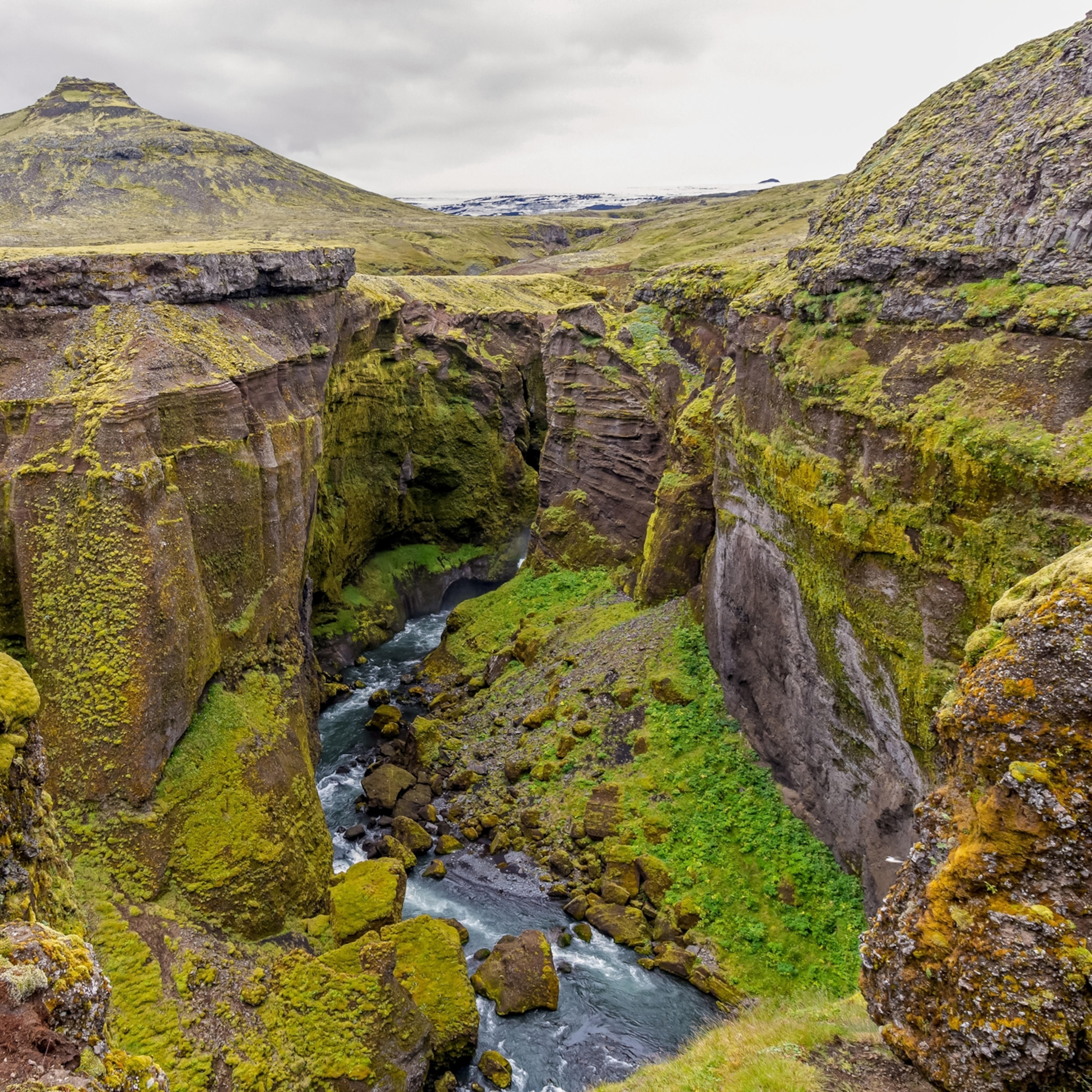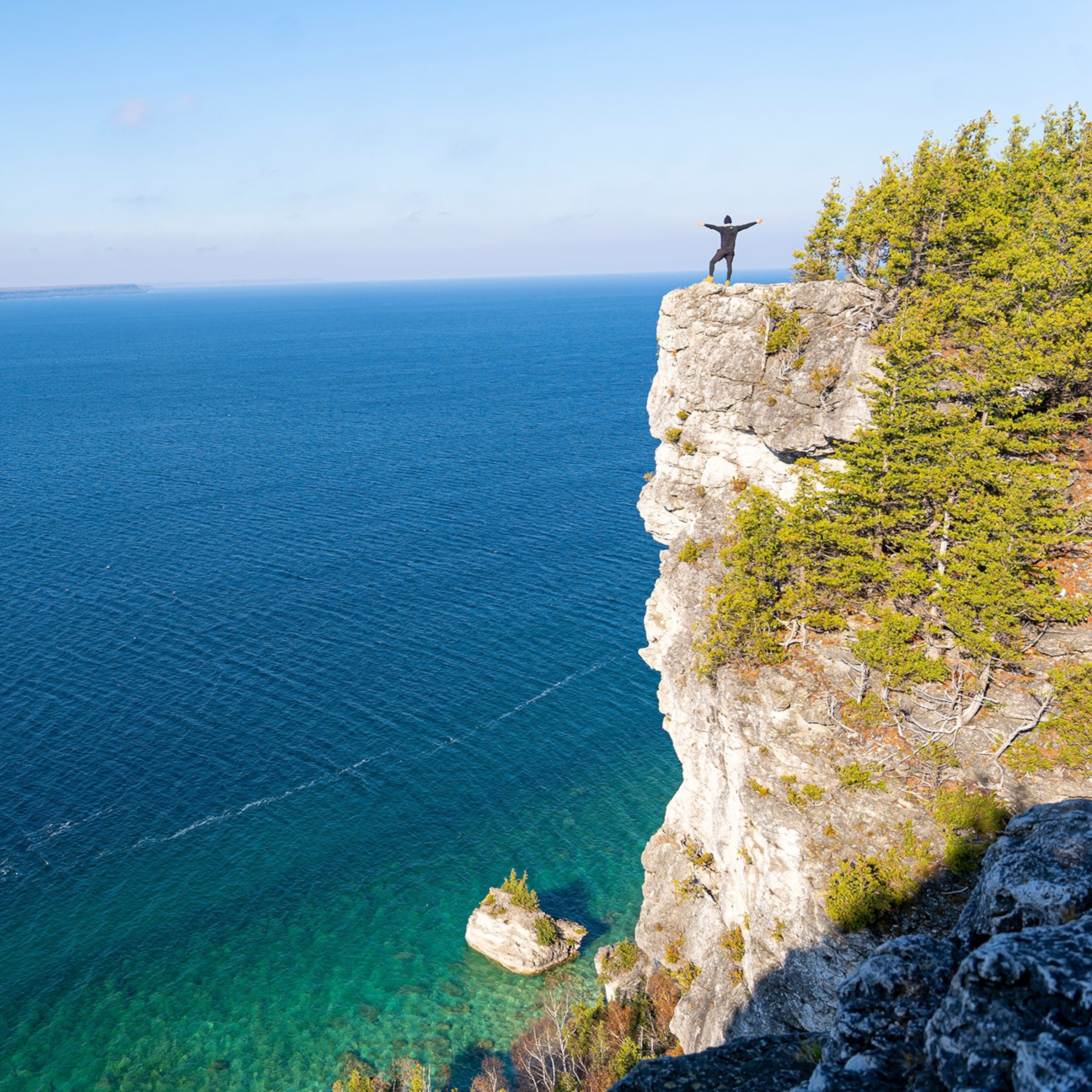
Explore 13,000 years of human history on this remote California island
Channel Islands National Park includes Santa Rosa Island, a virtual natural history museum with miles of uncrowded trails and breathtaking cliff-top ocean views.
Ringed by aquamarine waters, Santa Rosa Island is a folded landscape of canyons, mountains, and hanging sea cliffs. But there’s more than meets the eye. Archaeological intrigue lingers on this arid isle, the second largest in California’s Channel Islands National Park.
While digging in the island’s Arlington Canyon in 1959, archaeologist Phillip Orr discovered two femora that he suspected dated back to the late Pleistocene and brought them back to the mainland. That alone was not unique. Orr conducted fieldwork on windswept Santa Rosa for more than two decades. During his many expeditions, he excavated entire Chumash villages, numerous graves, middens (or archaeological waste pile), as well as the large bones of pygmy mammoths, which roamed the island 10,000 years ago.
But nearly 40 years after his 1959 discovery, John R. Johnson, Orr’s successor at the Santa Barbara Museum of Natural History, determined that the bones were more than 13,000 years old—making them the oldest-known human remains in North America.

The Arlington Springs Man, as the bones were called, supports the theory of a coastal migration by the earliest people from Northeast Asia into the Americas. “We now have a greater appreciation for the diversity of lifestyles 13,000 years ago—they weren’t all Clovis hunters,” Johnson adds, referencing early people who migrated via the Bering Land Bridge and hunted mammoths.
The relatives of the modern-day Chumash weren’t just skilled boat makers, they were expert basket weavers and fishers who built thriving villages throughout the region, overseen by both male and female leaders in a matrilineal society. Astronomers and storytellers, their connection to the environment can be seen today in pictographs at places like Chumash Painted Cave State Historic Park near Santa Barbara.
A trip to Santa Rosa Island—where unique flora and fauna are threaded by hiking trails—offers a vivid understanding of not only the region’s deep Chumash history and culture, but North American history. Here’s why you should go.
California’s Chumash culture
Before the arrival of Gaspar de Portola’s land expedition in 1769, the Chumash population in California was estimated at around 22,000. Their territory stretched 7,000 square miles from the western edge of the San Joaquin Valley to Paso Robles and Malibu and out to four of the five northern Channel Islands: Tuqan (San Miguel Island), Wi’ma (Santa Rosa Island), Limuw (Santa Cruz), and Anyapakh (Anacapa Island.) By the 1810s the Chumash who didn’t perish from introduced European epidemics, such as measles, were forcibly removed from the islands and placed in Spanish missions.
These days, there are 14 bands of Chumash Indians including the federally recognized Santa Ynez Band. Many other bands are seeking federal recognition. “We are a diverse group of people with seven separate languages,” says Julie Tumamait-Stenslie, former tribal chair of the Barbeño/Ventureño Band of Mission Indians, whose family tree branches out to Santa Cruz and Santa Rosa islands, Malibu, and Carpinteria. She says going to the islands is like returning home.
At Channel Islands National Park, Tumamait-Stenslie educates campers about Chumash culture around campfires during the summer (contact the visitors center for a schedule). “We have the Rainbow Bridge story, in which we were created on Santa Cruz Island and crossed over to the mainland.” These tales center around the Earth god, Hutash, who made people from the seeds of the Magic Plant, and her husband, Alchupo’osh, the Sky Snake, also known as the Milky Way.


(Is California’s Condor Trail the next great thru-hike?)
Tumamait-Stenslie suggests viewing the island like a natural history museum to understand the Chumash’s (and their ancestors’) relationship with the landscape. When she visits, she often thinks of her forebears’ resourcefulness, how they used seagrass, willows, and animal parts to construct dome huts to protect themselves from the elements. “[Imagine] walking through the doorway of your home that happened to be the jaw of a great blue whale,” she says.
The Chumash Indian Museum, in Thousands Oaks, California, (a 30-minute drive from Ventura Harbor), offers further background on the region’s Chumash history, with replicas of traditional villages and an ethnobotany garden.
“It's such an important thing to remind people that the Chumash people are still here,” says Barbara Tejada, board chair and acting director, about the museum’s programs. One recent event focused on the annual Santa Barbara Channel crossing, from the mainland to Santa Cruz Island’s Scorpion Beach, in tomols, large traditional canoes built of hardwood and sealed with tar.
(New England’s 740-mile canoe trail is an epic journey through history.)
“There have been replica canoes that have been constructed by the modern Chumash community. They practice paddles along the Santa Barbara coast in the summer and the annual crossing in September,” says Tejada. “It shows the important transportation link between the mainland and the islands, and it really helps preserve paddling in maritime Native cultures today.”
How to explore Santa Rosa Island
As it is located 26 miles off the California mainland, getting to Santa Rosa Island is half the adventure. Most visitors take a three-hour boat ride on Island Packers Cruises from Ventura Harbor, the official boat concessionaire for the national park. Reservations (some of which are seasonal) can fill up quickly, especially for overnight trips, so plan far enough ahead. Boaters can visit by private watercraft but should check approved landing areas and permit information on NPS’ boating guide.

“The journey itself is fabulous,” Tumamait-Stenslie says, about crossing the Santa Barbara Channel. “You can encounter whales, sea lions, and common dolphins by the bow.” Birders will find abundant avian life, among them California brown pelicans, Cassin’s auklets, Brandt’s cormorants, and Scripps’ murrelets.
(Could a birding boom in the U.S. help conservation take flight?)
On the island, trails wind through a rare forest of Torrey pines (one of two remaining in the world) and fields of the endangered soft-leaved paintbrush. Look for the endemic Santa Rosa Island fox, spotted skunks, pinnipeds, and other colonies of birds, such as snowy plovers.
While day trips to Santa Rosa are possible, Tumamait-Stenslie recommends spending a night to experience the island the way the Chumash and their ancestors did—in near silence with stunning views of the Milky Way in the night sky. The island’s one campground with 15 sites is reachable via a mile-and-a-half hike from the pier. Reservations go fast, so book a few months out on the park’s booking site. Experienced backpackers and kayakers can try backcountry beach camping from August to December but should check weather conditions before heading out.
“People ask me all the time, ‘what does it feel like to be in your homeland?’” says Tumamait-Stenslie. “I tell them, go home. And I don't mean [someplace like] Chicago, but across the ocean somewhere, and walk those lands. Because there is a genetic memory that all of a sudden makes you start thinking of your ancestors. You start thinking about your name and where it comes from.”






